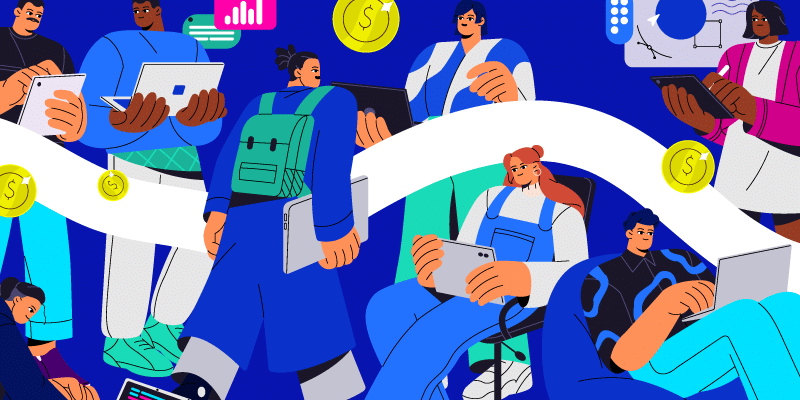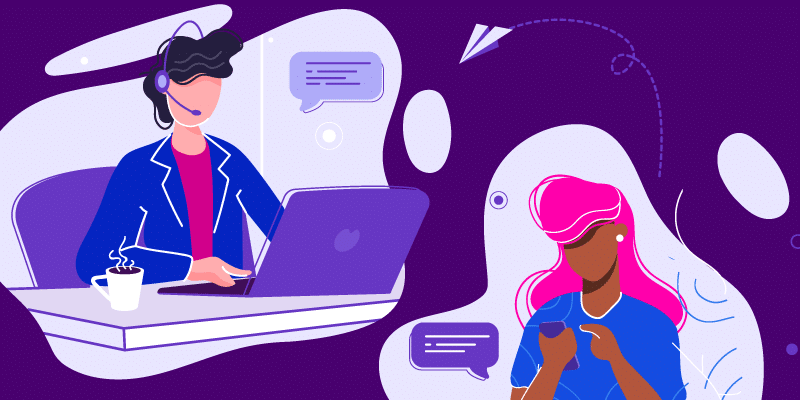Our Chief Strategy Officer Talks Cloud Vision, Millennials, and Siberian Huskies
February 23, 2015
5 minute read

 When it comes to mastery of the enterprise IT landscape, few people can touch Michael Tweddle. In 18 years as a systems analyst, sales consultant, and technical team leader, he’s led teams at Quest and Dell through several major shifts in the industry, including Dell’s acquisition of Quest. This month, he became BetterCloud’s chief strategy officer.
When it comes to mastery of the enterprise IT landscape, few people can touch Michael Tweddle. In 18 years as a systems analyst, sales consultant, and technical team leader, he’s led teams at Quest and Dell through several major shifts in the industry, including Dell’s acquisition of Quest. This month, he became BetterCloud’s chief strategy officer.
Where are you from?
I grew up in Dallas, where my dad was an electrical engineer. At Texas Tech, I studied management and information systems, and met my wife at my fraternity brother’s house.
I graduated in ‘97, and my first job out of college was at Exxon, migrating their legacy email systems to Exchange. There were a lot of growing pains, a lot of nights and weekends, but those growing pains made Exchange what it is today—a stable, reliable email system. Exxon was a great first job. They really invested in new hires, a younger crop of kids from school. Our group, Computer and Networking Services, felt like a startup.
How did the shift to Exchange impact the industry?
We were going from big mainframe applications to PC client/server applications. The whole user experience changed; companies went from using a dumb terminal to access email to using Outlook. It was a completely different way for employees to communicate with each other. It wasn’t just about moving data. It was about… how do you train the users, and make sure they’re productive?
Those are pretty much the same things we’re dealing with today at BetterCloud. It reminds me of when I joined Quest—the Windows group was very small, and our work had the same themes of collaboration and directory services. There are so many similarities between adopting the Microsoft platform in the early 2000s and adopting cloud platforms today.
In the late 90s, IT shifted from mainframes to client server. Today, it’s shifting from on-prem directory and collaboration applications to cloud services. What’s going to happen in 2035?
Most of the IT limitations that are critical today will not be as important. Look at email: In the early 2000s, IT had to be so concerned with the amount of storage and bandwidth available. When you move to cloud services, the day-to-day management of those things are not as important.
With bandwidth and storage no longer an issue, security remains an important consideration for enterprises considering a move to the cloud. BetterCloud does a great job of exposing potential security threats and proactively securing data.
Before I can say what’s going to happen in the future, I need to see what’s going to happen over the next few years, because it’s a critical time. In the next three or four years, it’ll become clear what the next set of killer cloud services are. That’ll add another layer of complexity.
Though I can’t say exactly what things will be like in 2035, I can tell you what’s going to be important over the next 5-10 years. First, regulation requirements, because as more and more sensitive data moves to the cloud enterprises are going to need more sophisticated tools to secure and manage it. Second, cross-app integration; if a company is using 30 different cloud apps, how do you—for example—deprovision users when they leave the organization?
After 13 years at Quest and Dell, how’d you end up at a little startup like BetterCloud?
Someone who worked for me at Quest went on to Cloud Sherpas, and I met [BetterCloud CEO David Politis] through that connection. I’ve been interested in the cloud IT space since it first started to appear, and I kept a close eye on what BetterCloud was doing. After that, it was a pretty natural fit.
What exactly does a chief strategy officer do?
David and I debated the title quite a bit, whether I was going to be a CSO or COO. We settled on “chief strategy officer” because I wanted to focus on the product side. I want to establish our vision, and to make sure we communicate that goal to our team, so we know what the end looks like—and how that end goal could change.
That helps the product team know where they should focus their road map. It helps the engineering team figure out where to focus their engineering efforts. And it helps the marketing team understand the themes that are coming out of product engineering—which affects how we align our message, how we train our sales force, what kind of partnerships we go after. Vision is the understanding of what we’re going to do across the whole company.
You’ve got a ton of experience with Microsoft products, but at BetterCloud you’ll also be deciding strategy for Google’s ecosystem. What kind of learning curve will that involve?
Actually, the overall strategy for each platform isn’t that different. Both Google Apps and Office 365 provide similar services around email, directory, and cloud storage. Both provide some native management and security functionality, but it’s never as complete as organizations want. Both Google and Microsoft are looking to enhance functionality and the end-user experience, but not necessarily the experience of the IT admin managing the platform.
My learning curve will involve identifying the gaps in the IT admin’s toolkit that BetterCloud can fill. That’s where the differences between the platforms become important—for example, Microsoft is a little more focused on enterprise security such as DLP, so our O365 product needs to build on what they’ve created. Google, on the other hand, seems to be further ahead on document collaboration, so there’s a greater need for robust solutions around document security.
What do you think it’ll be like to shift from Dell to a startup full of millennials?
In terms of the generation thing…[Laughs.] I guess I’d fall into Generation X. I was really into Nirvana and Metallica in high school, and played a lot of Atari and Nintendo. I remember how awesome it was when the first PlayStation came out. I remember taking my girlfriend to go see The Bodyguard.
The atmosphere here feels a lot like when I joined Quest in 2001. Part of the appeal of coming here was getting back to a culture where I felt like that. I think that’s a trait of millennials: they’re not afraid to fail. This group is willing to fail, but—crucially—they’re willing to fail quickly. The worst thing you can do is to hold onto a process for a year before you decide it’s a failure.
Combined with that culture, I think my experience working with Microsoft, and knowing how to recognize the profile of a potential customer that we have a high probability of winning with, will help to accelerate BetterCloud’s growth.
What do you do for fun?
Mostly spend time with my family. My son’s 13, and on track to become an Eagle Scout; my daughter’s 12 and is huge into tennis. I think our family flaw is that we keep adopting animals. We’ve got three Siberian huskies at home—Maya, Bella, and Shelby—and the fourth dog is a Chihuahua-Dachshund mix.
We’re also die-hard Cowboys fans. I used to play football in high school in Texas. I was a wide receiver, fast and skinny, and our playoff games were at Cowboys Stadium. So my son and I try to make it to a game there every year. Although last year was the first year in a long time that we didn’t make it, and they did better than in previous years, so we might have to rethink it.




 When it comes to mastery of the enterprise IT landscape, few people can touch Michael Tweddle. In 18 years as a systems analyst, sales consultant, and technical team leader, he’s led teams at Quest and Dell through several major shifts in the industry, including Dell’s acquisition of Quest. This month, he became BetterCloud’s chief strategy officer.
When it comes to mastery of the enterprise IT landscape, few people can touch Michael Tweddle. In 18 years as a systems analyst, sales consultant, and technical team leader, he’s led teams at Quest and Dell through several major shifts in the industry, including Dell’s acquisition of Quest. This month, he became BetterCloud’s chief strategy officer.

